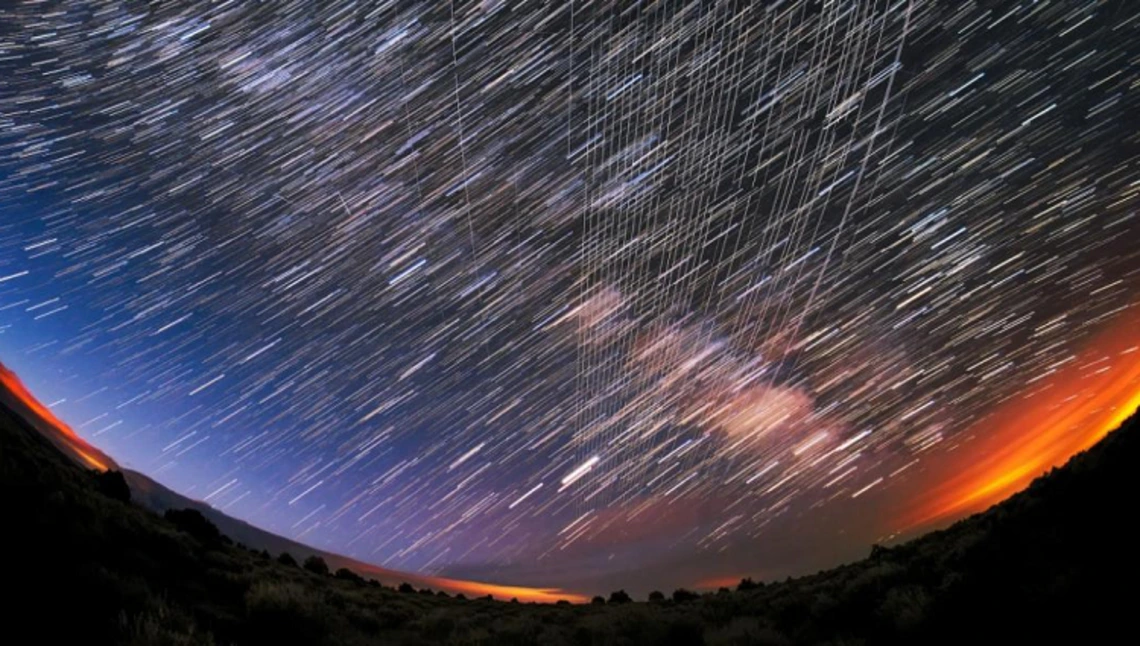AME Doctoral Student Contributes to Satellite Research Paper

The more bright satellites are launched into low-Earth orbit, the more chances there are to disrupt astronomical observations. The concerns over light pollution have existed for years, but came to a head with the launch of BlueWalker 3, a new satellite that ranks among the brightest objects in the night sky. AME PhD student Tanner Campbell recently appeared as co-author for a study on satellite light pollution, which was published in the scientific journal Nature.
The paper, "The high optical brightness of the BlueWalker 3 satellite," states that the expected build-out of constellations with hundreds of thousands of new, bright objects1 will make active satellite tracking and avoidance strategies a necessity for ground-based telescopes.
"The proliferation of satellite megaconstellations will have a profound impact on ground-based astronomy. Sunlight reflected by these satellites will leave trails on the images taken by existing and upcoming ground-based surveys such as the Vera C. Rubin Observatory in Chile, making it challenging to do astronomical research," said Vishnu Reddy, professor of planetary sciences at the university's Lunar and Planetary Laboratory and director of the Space4 Center, who is one of the authors of the Nature study.
As part of the international effort and in partnership with Starizona, a Tucson-based small business, Reddy, Campbell, and another graduate student built a small ground-based sensor with a camera lens that accurately measured the brightness of the BlueWalker 3 satellite. The satellite, a prototype for the company's BlueBird satellite megaconstellation, had unfurled the largest telecommunications array, spanning 693 square feet.
Astronomers use a scale to measure the brightness of stars in the night sky. The brightness of the stars we can see with an unaided eye ranges from minus 1 at the brightest to 6 at the faintest. Sirius, the brightest star, is minus 1. Planets like Venus can sometimes be brighter – closer to minus 4. Reddy and his team measured BlueWalker 3 at visual magnitude 0.4 – closer to the brightest stars seen in the night sky.
"We realized that measuring the brightness of really bright objects is very challenging, as the light from them can overwhelm the camera," said Campbell.
